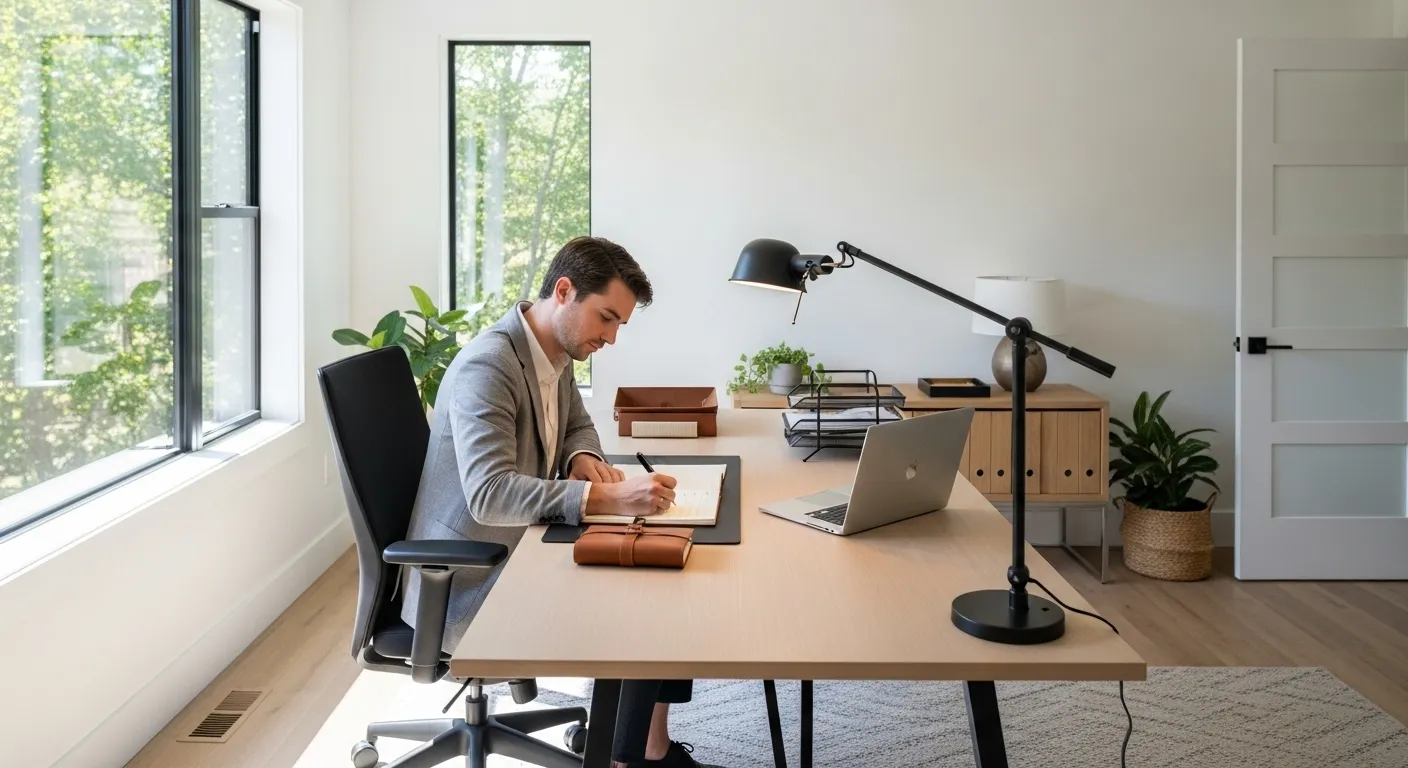
Do you ever reach the end of your day feeling both exhausted and unproductive? You were busy—constantly responding, scrolling, and switching between tasks—but what did you actually accomplish? If this sounds familiar, you’re not alone. Our smartphones, designed to be the ultimate tools of connection and productivity, have quietly become the single greatest source of our distraction.
The constant buzz of notifications, the endless scroll of social media, and the pressure to be always available come at a cost. They fragment our attention, erode our ability to focus deeply, and leave us in a state of perpetual, low-grade anxiety. We know we need to change, but the idea of a complete digital detox feels overwhelming, unrealistic, and frankly, a bit isolating in our hyper-connected world.
But what if there was a middle ground? A way to reclaim your focus, restore your mental peace, and reduce smartphone addiction without having to abandon technology altogether? There is. It’s a simple but powerful practice: dedicating one day a week to using a “dumb phone.”
This isn’t about going back in time or giving up the conveniences of modern life. It’s about creating an intentional boundary. It’s about giving your brain a much-needed rest from the constant stimulation of your smartphone. The dumb phone challenge is a weekly reset button for your attention span, helping you build a healthier, more balanced relationship with the technology that governs so much of your life. In this guide, we’ll explore why this practice is so effective and how you can easily implement your own “Dumb Phone Day” starting this week.
📚 Table of Contents
- How Our Attention Became a Commodity
- Setting Up Your Smartphone for the Other Six Days
- Master Your Notifications with Triage
- Design a Minimalist Home Screen
- Embrace “Do Not Disturb” and Focus Modes
- Use App Timers as Guardrails
- Creating Environments That Encourage Disconnection
- Putting It Into Practice: Worked Examples
- Troubleshooting Common Challenges
- Handling Relapse Moments and Digital Urges
- Navigating FOMO (Fear of Missing Out)
- Managing Social Expectations
- Knowing When to Make Exceptions
- Frequently Asked Questions
- What about privacy? Are dumb phones more secure?
- I work a night shift or have an irregular schedule. How can I adapt this?
- How can this approach work for parents who need to be reachable for their kids?
- My job requires me to be on-call or responsive. Is this realistic for me?
- Your First Small Steps to a More Focused Life
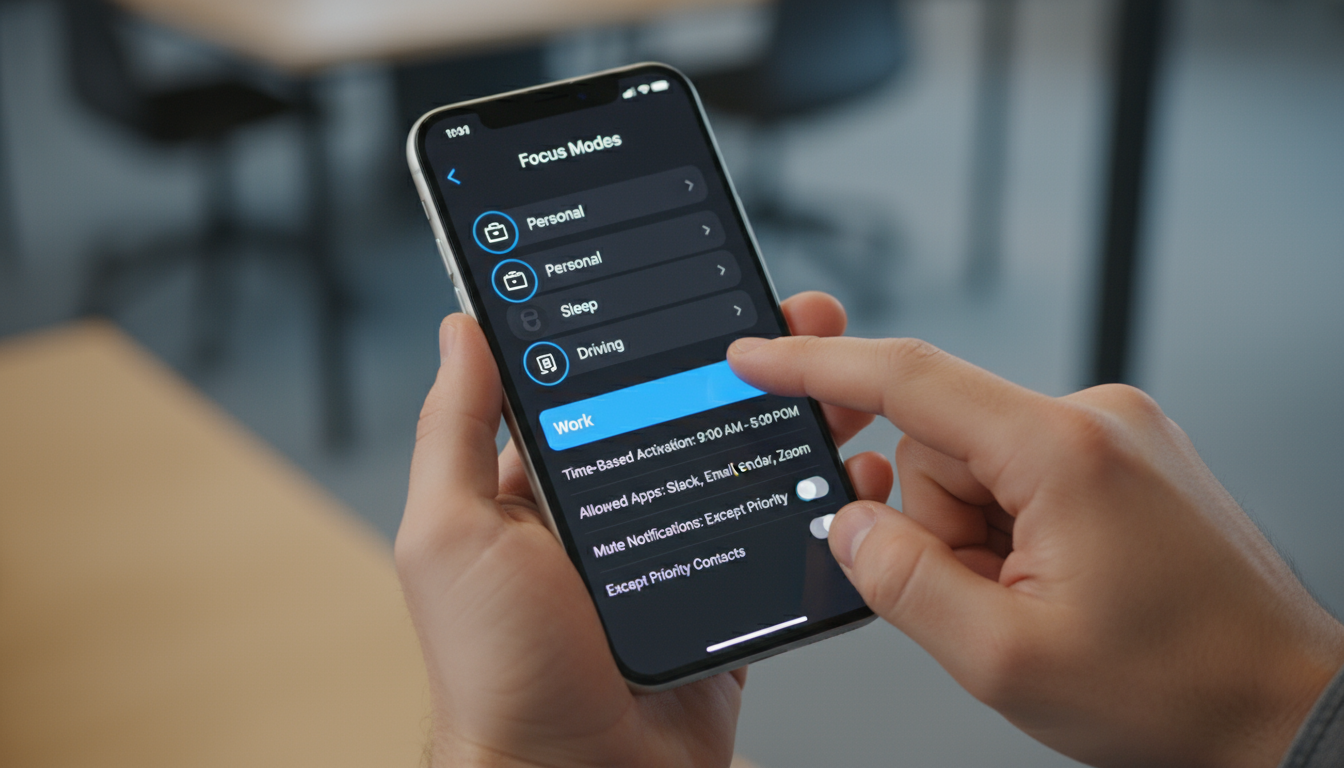
How Our Attention Became a Commodity
To understand why a dumb phone day is so effective, we first need to grasp why our smartphones are so difficult to put down. It isn’t a lack of willpower on your part. These devices and the apps on them have been meticulously engineered by some of the brightest minds in the world to capture and hold your attention for as long as possible.
The core mechanism at play is the dopamine loop. Dopamine is a neurotransmitter in the brain that plays a major role in motivation and reward. When you do something pleasurable, like eating a delicious meal or receiving a compliment, your brain releases a small hit of dopamine, which makes you feel good and encourages you to repeat the behavior. App developers have learned to harness this natural process.
Think about the simple act of pulling down to refresh your email or social media feed. The brief moment of anticipation before the new content loads is filled with possibility. Will there be a new email from a client? A “like” on your photo? A funny message from a friend? When you see a new notification, you get a tiny dopamine hit. The loop is: cue (the notification), routine (checking the phone), and reward (the dopamine hit). This system, as described in studies on behavioral psychology, creates a powerful, habit-forming cycle that can lead to smartphone addiction.
This isn’t just about social media. News apps use alarming headlines and infinite scroll to keep you engaged. Mobile games offer daily rewards and level-up systems that compel you to return. Even productivity apps can create a sense of busyness with constant reminders and updates. Every red notification bubble, every ping, every buzz is a carefully designed prompt to pull you back into the digital world.
For adults living in busy urban environments, these digital triggers are layered on top of a landscape already filled with stimulation. The result is a state of continuous partial attention, where we are never fully present in any single activity. Our focus is constantly divided between the physical world and the digital one simmering in our pocket. A dumb phone, by its very nature, breaks this cycle. It has no infinite scroll, no push notifications, and no algorithm designed to learn your preferences. It just makes calls and sends texts. By using one for a day, you starve the dopamine loop and give your brain a chance to reset.

Setting Up Your Smartphone for the Other Six Days
A successful “Dumb Phone Day” isn’t just about what you do on that one day; it’s also about how you manage your smartphone during the rest of the week. The goal is to reduce the friction of a weekly phone detox by making your primary device less demanding of your attention overall. Think of it as training for your day of digital peace.
Here are a few powerful routines you can implement to turn your smartphone from a source of distraction into a functional tool.

Master Your Notifications with Triage
Not all notifications are created equal. An emergency call from family is critical; a 20% off coupon from a retail app is not. The first step is to perform a notification audit. Go into your phone’s settings and turn off notifications for every single app. Then, turn them back on, one by one, for only the absolute essentials. This typically includes phone calls, messages from key contacts, and calendar alerts.
For everything else, embrace notification batching. This is the practice of checking less important apps (like email or social media) at specific, scheduled times of the day rather than responding to every alert as it arrives. By turning off their notifications, you get to decide when to engage, putting you back in control.

Design a Minimalist Home Screen
Your home screen is prime real estate for your attention. If it’s cluttered with colorful, enticing app icons, you’re more likely to open them reflexively. Redesign your home screen to be as boring as possible.
Move all non-essential apps off the home screen and into a single folder on the second page. Your home screen should contain only utility-based tools: your phone, messages, camera, maps, or calendar. For an even more advanced setup, consider setting your phone’s display to grayscale. Removing the vibrant colors makes the screen significantly less stimulating and can dramatically reduce mindless scrolling.
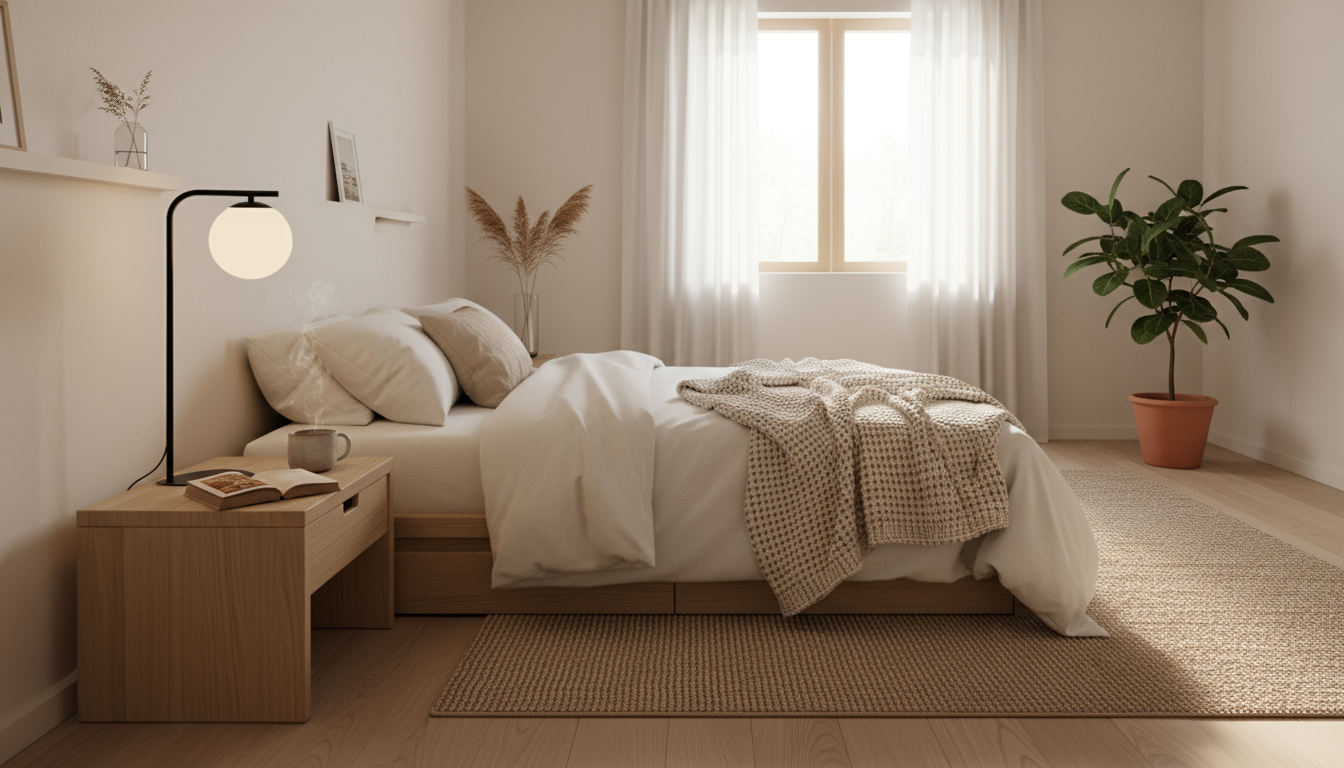
Embrace “Do Not Disturb” and Focus Modes
Modern smartphones come with powerful tools to help you manage your focus. DND (Do Not Disturb) is your best friend. Schedule it to turn on automatically at night, but also use it strategically during the day when you need to concentrate on a task. You can customize it to allow calls from specific contacts, so you won’t miss a true emergency.
Beyond DND, explore Focus Modes (available on both iOS and Android). You can create different modes for “Work,” “Personal,” or “Reading.” Each mode can have its own home screen and specify which apps and people are allowed to notify you. For example, a “Work” mode might only allow notifications from Slack and your boss, while hiding all social media apps. Setting these up takes a few minutes but pays dividends in reclaimed focus throughout the week.

Use App Timers as Guardrails
If you have specific apps that you know are time sinks, set daily usage limits. This feature is built into your phone’s digital wellness or screen time settings. You can set a timer for 15 or 30 minutes a day for apps like Instagram, TikTok, or YouTube. When your time is up, the app will be blocked. It’s a simple, non-judgmental reminder that helps you stick to your intentions and prevents you from falling down a rabbit hole for hours.

Creating Environments That Encourage Disconnection
Your physical environment plays a massive role in shaping your habits. Just as you wouldn’t try to work in a loud, chaotic space, you can’t expect to build healthy tech habits if your surroundings are constantly prompting you to pick up your phone. By making small, intentional changes to your environment, you can make digital wellness the path of least resistance.

Establish Sacred Screen-Free Zones
Designate specific areas in your home as completely screen-free. The two most impactful places to start are the dinner table and the bedroom. Mealtimes are for connection—with family, friends, or even just your own thoughts. Banning phones from the table encourages conversation and mindful eating.
The bedroom is even more critical. Making it a tech-free sanctuary is one of the single best things you can do for your sleep and mental health. When you bring your phone to bed, you bring the entire world’s worth of stress, news, and social pressure with you. It disrupts your ability to wind down and can negatively impact your sleep quality.

Engineer a Sleep-Friendly Evening
Our brains are sensitive to light, and the light from our screens is particularly disruptive to sleep. This is because they emit a high concentration of blue light, a type of light that our brains interpret as daylight. Exposure to blue light in the evening can suppress the production of melatonin, the hormone that signals your body it’s time to sleep. According to the Sleep Foundation, this can shift your circadian rhythm, making it harder to fall asleep and reducing the quality of your rest.
Create a “digital sunset” an hour before bed. During this time, put all screens away. Charge your phone in another room overnight—not on your nightstand. If you use your phone as an alarm, buy a simple, inexpensive alarm clock. This removes the temptation to check it one last time before bed or, even worse, first thing upon waking. Use this final hour for calming activities like reading a physical book, light stretching, journaling, or talking with a partner.

Use Cues for Deep Work
Just as your phone provides cues to distract you, you can create environmental cues to help you focus. When it’s time for deep work, have a specific ritual. This could involve putting on noise-canceling headphones, closing your office door, and placing your phone in a drawer or another room. This physical act of putting your phone away signals to your brain that it’s time to concentrate.
This simple separation creates a small amount of friction. If the urge to check your phone arises, you have to physically get up and retrieve it. Often, that small barrier is enough to make you pause and ask, “Do I really need to check this right now?” More often than not, the answer is no, and you can return to your task with your focus intact.

Putting It Into Practice: Worked Examples
Theory is helpful, but practical application is what creates change. Let’s walk through two realistic scenarios: a simple evening wind-down you can start tonight, and a full plan for your first “Dumb Phone Day.” These examples are designed to be achievable, not overwhelming.

A 10-Minute Evening Wind-Down Routine
The goal here is to create a small buffer between your screen-filled day and a restful night’s sleep. This isn’t about radically changing your evening; it’s about adding a short, intentional pause.
Step 1 (60 minutes before bed): Announce your digital sunset. If you live with others, let them know you’re putting your phone away for the night. This creates social accountability. Plug your phone in to charge—in a room that is not your bedroom.
Step 2 (55 minutes before bed): Take 5 minutes to tidy your space for the next day. Lay out your clothes, pack your gym bag, or clear your desk. This small act of preparation helps calm the mind and reduces tomorrow’s friction.
Step 3 (50 minutes before bed): Spend the last 5 minutes on a non-digital, calming activity. This could be a few gentle stretches, writing down three things you’re grateful for in a journal, or simply sitting quietly and focusing on your breath. The key is to do something that requires no screens and has a clear end point.
That’s it. Ten minutes. It’s a small commitment, but it powerfully signals to your brain that the day is over and it’s time to rest. It breaks the cycle of late-night scrolling and helps you reclaim the crucial hour before sleep.
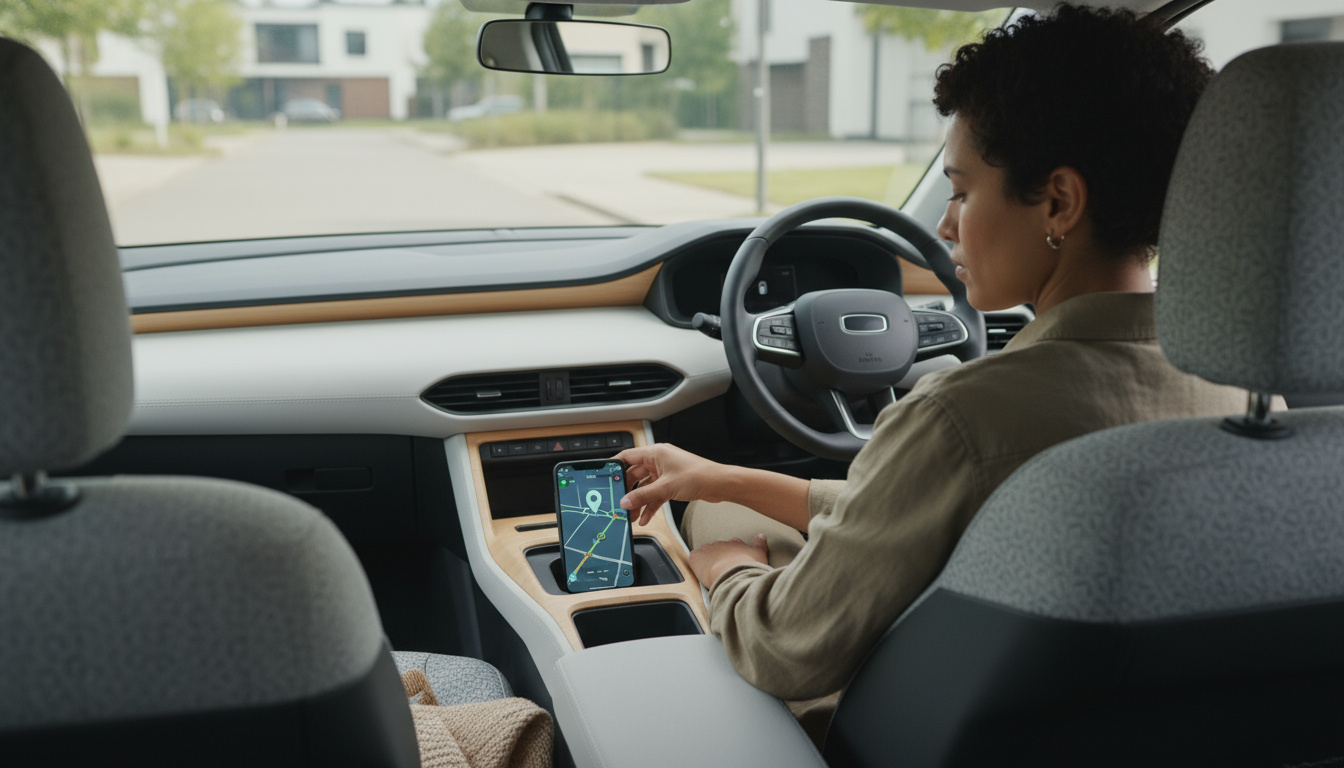
Your First “Dumb Phone Day” Challenge
Choose a day for your weekly phone detox, typically a Saturday or Sunday when work demands are lower. The goal is not to be unreachable but to be less distractible. You can use an actual basic phone (a true “dumb phone”) or put your smartphone into an extremely restricted mode.
The Setup (The Night Before):
- If using a real dumb phone: Forward your calls from your smartphone to your dumb phone. Let your close friends and family know that you’ll be reachable by call or basic text only for the day.
- If using your smartphone: Prepare it for “dumb mode.” Delete all social media, news, and email apps (you can redownload them tomorrow). Turn on grayscale mode. Use a focus mode that blocks all notifications except for calls and texts from your designated favorite contacts. Remove all apps from your home screen except for Phone, Messages, and Maps (for emergencies).
A Sample Saturday Schedule:
Morning (8 AM – 12 PM): Wake up without a screen. Instead of rolling over and checking notifications, get up and make coffee. Go for a walk, read a chapter of a book, or do a workout. You might feel a phantom urge to check your phone—this is normal. Acknowledge the feeling and let it pass. Notice the world around you. Use your phone only if you need to coordinate plans with someone via a call or text.
Afternoon (12 PM – 5 PM): Engage in a hobby that requires your full attention. This could be gardening, cooking a new recipe, working on a puzzle, or visiting a museum. If you’re meeting friends, be the person who is fully present. You won’t be tempted to pull out your phone during a lull in the conversation. If you get lost, you might even have to ask a real person for directions—a novel experience for many.
Evening (5 PM onwards): Enjoy a screen-free evening. Play a board game with family, have a long dinner conversation, or go see a live music performance. Without your phone as a crutch, you may find yourself more engaged and connected to the people you’re with. At the end of the day, reflect on how you felt. Were you bored? Restless? Calm? Creative? There’s no right or wrong answer.
This day is a powerful exercise in mindfulness. It reminds you that your phone is a tool to be used, not a default state of being. The goal of the dumb phone challenge is to carry this feeling of presence and intentionality into the rest of your week.

Troubleshooting Common Challenges
Embarking on a dumb phone day or any effort to reduce smartphone addiction will inevitably come with a few bumps in the road. This is completely normal. Anticipating these challenges and having a plan for them can make all the difference between giving up and building a sustainable, healthier habit.
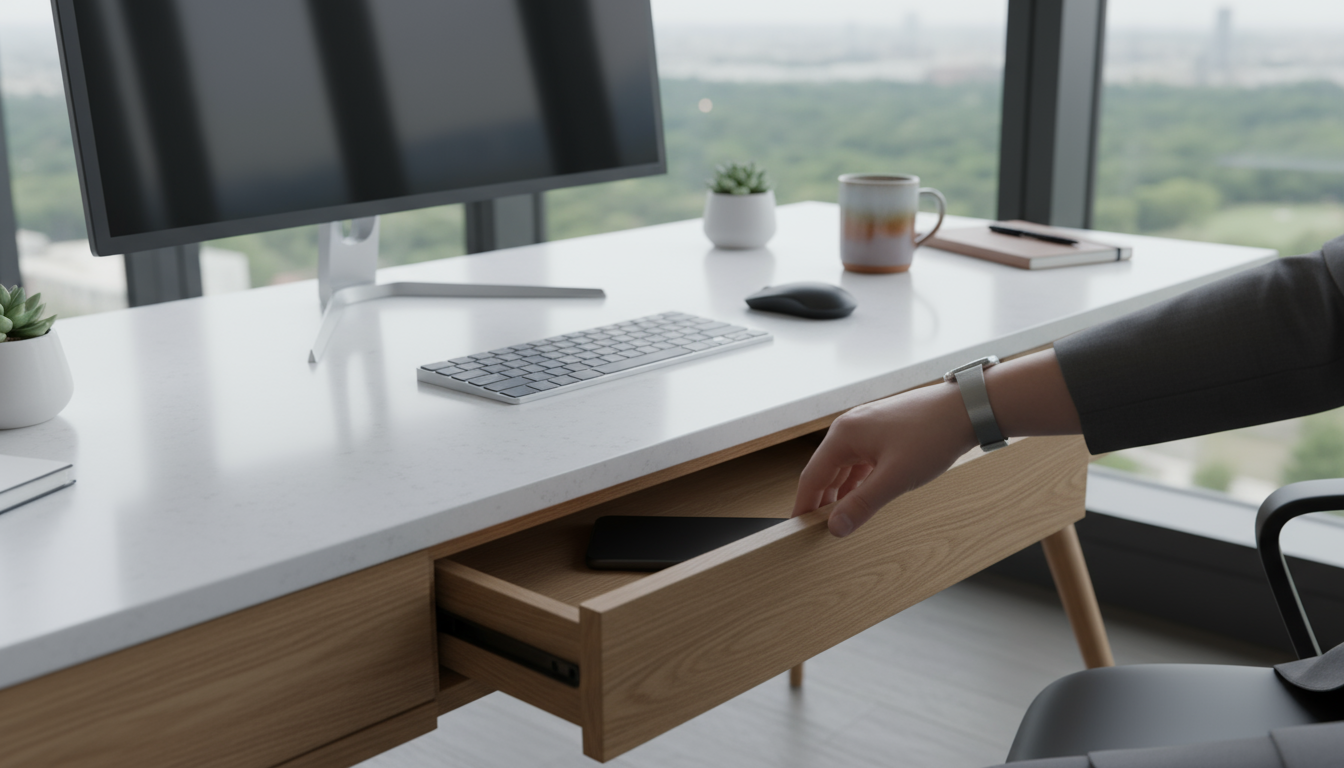
Handling Relapse Moments and Digital Urges
You will feel the urge to check your phone. It might feel like an itch you can’t scratch. This is a sign that the dopamine loop has been disrupted, and your brain is seeking its usual reward. When this happens, don’t judge yourself. Simply pause and acknowledge the feeling. Ask yourself: “What am I trying to avoid right now?” Often, our impulse to grab our phone is a way to escape boredom, discomfort, or a challenging task.
Try the “surf the urge” technique, a concept from mindfulness practices. Imagine the craving as a wave. Notice it building, cresting, and then naturally subsiding. The urge will pass on its own if you don’t act on it. Having a pre-planned replacement activity can help. When the urge strikes, immediately stand up, stretch, grab a glass of water, or look out a window for 60 seconds.

Navigating FOMO (Fear of Missing Out)
One of the biggest psychological hurdles is FOMO. You might worry that you’re missing an important news update, a social media trend, or an invitation from friends. The reality is that almost nothing that happens online is so urgent it can’t wait 24 hours. In fact, research from institutions like the American Psychological Association often highlights the link between high social media use and increased anxiety.
Reframe FOMO as JOMO: the Joy of Missing Out. Celebrate the fact that you are not being pulled into every minor drama or fleeting trend. You are choosing to be present in your own life. Remind yourself that if there is a true emergency, the people who matter will call you. Everything else is just noise.
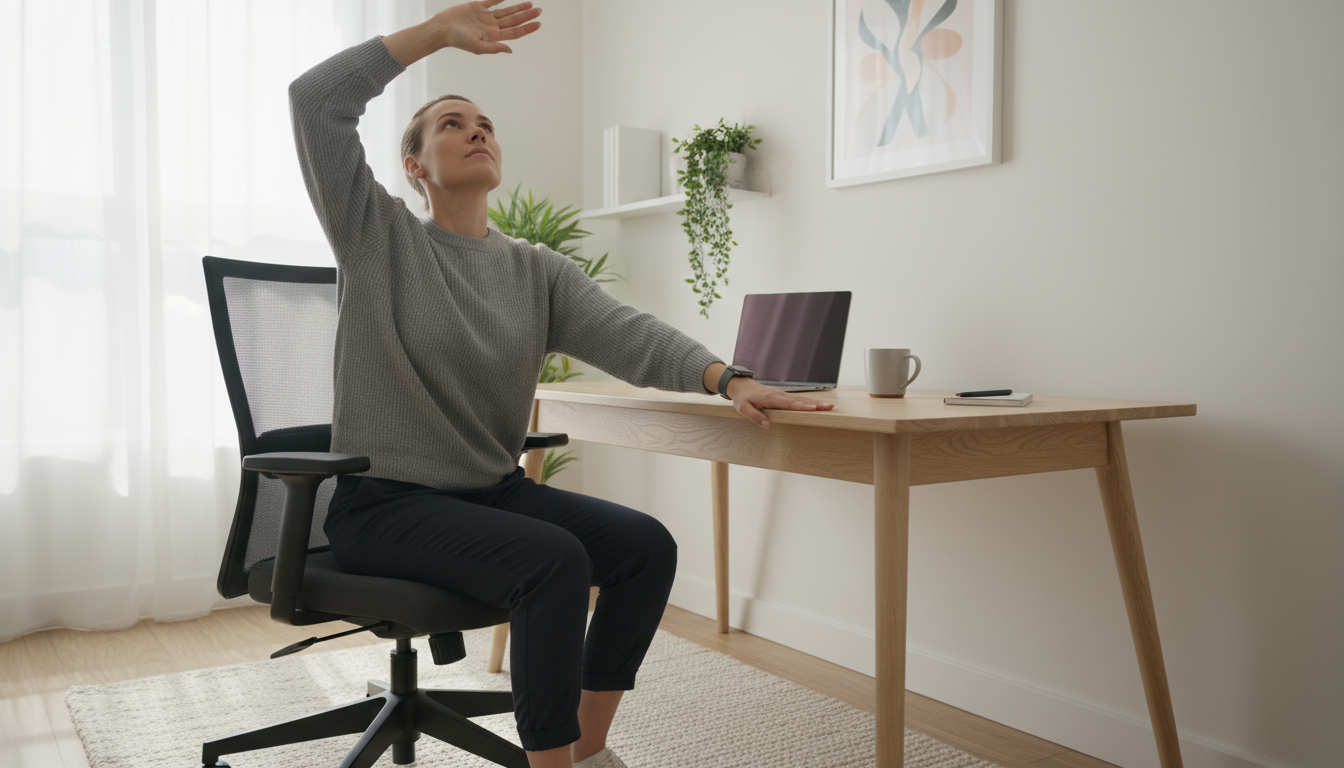
Managing Social Expectations
Sometimes the pressure to be constantly available comes from others. Friends, family, or colleagues may be used to you responding to messages instantly. It’s helpful to be proactive and set expectations. A simple message to a group chat like, “Hey everyone, I’m taking a day to unplug tomorrow. If you need me urgently, please call!” can work wonders.
You are not obligated to be reachable on every platform at all times. By setting this boundary, you not only do yourself a favor but also model healthy tech behavior for others. You might be surprised how many people respond with, “That’s a great idea, I should try that!”
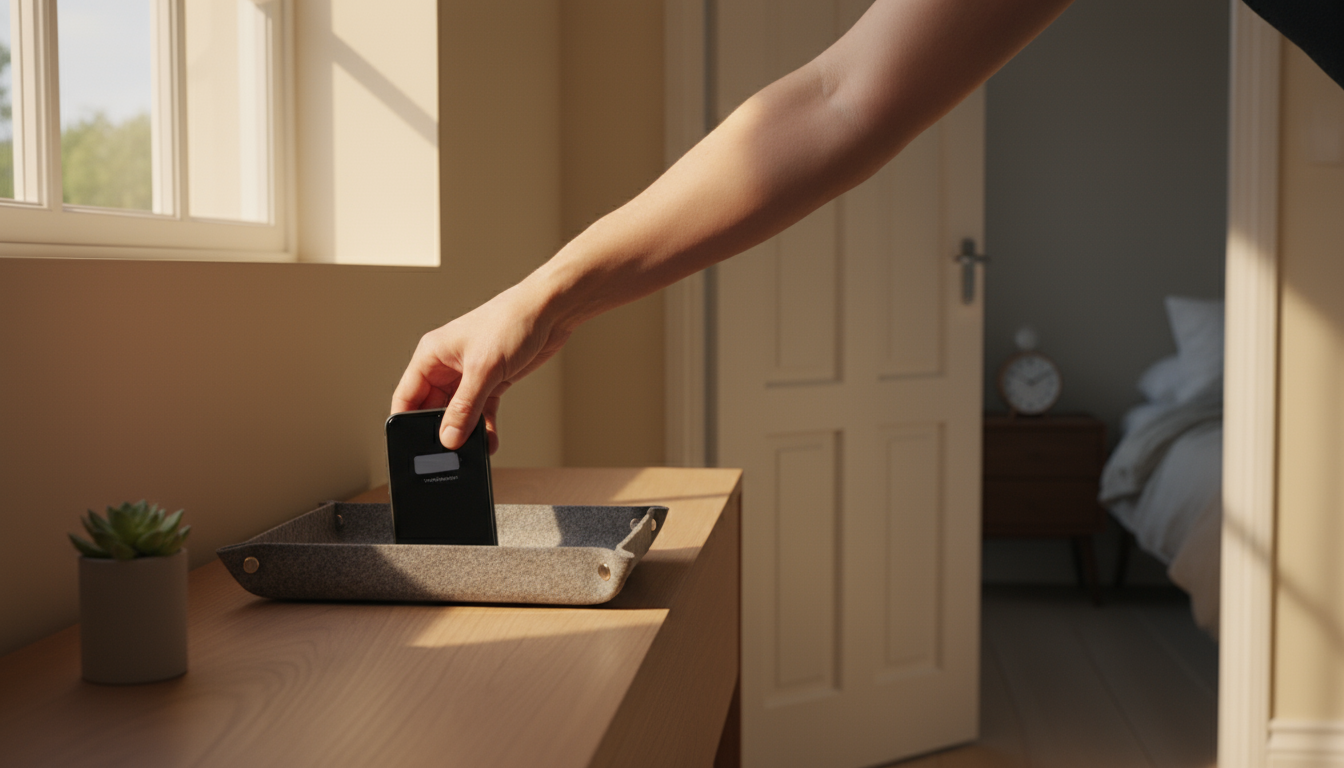
Knowing When to Make Exceptions
A dumb phone day is a guideline, not a rigid law. There will be times when you need to make an exception. Perhaps you are on-call for work, waiting for an important call about a family matter, or need GPS to navigate to an unfamiliar location. That’s okay. The goal is intentionality. If you need to use a smart feature, use it for its specific purpose and then put the phone away again. Don’t let one necessary use become an excuse to spend the next hour scrolling. The aim is progress, not perfection.

Frequently Asked Questions
As you consider implementing a dumb phone day, a few practical questions might come to mind. Here are answers to some of the most common ones.
What about privacy? Are dumb phones more secure?
In general, dumb phones (or feature phones) collect significantly less data than smartphones. They don’t have location tracking running constantly in the background, they aren’t connected to vast ad networks, and they don’t house apps that monitor your behavior. While no device is 100% immune to security threats, a basic phone that only handles calls and standard texts presents a much smaller attack surface and a more private user experience. It’s a return to a time when a phone was just a phone.
I work a night shift or have an irregular schedule. How can I adapt this?
The concept of a “Dumb Phone Day” is flexible. It doesn’t have to be a Saturday or Sunday. Look at your schedule and identify any 24-hour period where you have the least number of external demands. It could be a Tuesday into a Wednesday. The principle is the same: secure one day a week for a digital reset. You could even break it up into two 12-hour blocks if a full 24-hour period is impossible. The key is consistency and giving your brain a regular, substantial break from hyper-connectivity.
How can this approach work for parents who need to be reachable for their kids?
This is a perfect use case for a dumb phone or a heavily restricted smartphone. The point isn’t to be unreachable; it’s to be undistracted. A dumb phone excels at its core functions: making and receiving calls and texts. You will still be 100% reachable by your children, their school, or a babysitter in an emergency. What you *won’t* be is distracted by work emails, social media notifications, or news alerts while you’re supposed to be present with your family. It allows you to be a more focused and engaged parent.
My job requires me to be on-call or responsive. Is this realistic for me?
If your job truly requires 24/7 availability, a full dumb phone day might be challenging. However, you can still apply the principles. Perhaps your “dumb phone” period is from the moment you finish work on Friday until Saturday evening. Or maybe you adopt a “Dumb Phone Evening” every single night from 8 PM onwards. You can also configure a “Work” Focus Mode on your smartphone that is extremely strict, only allowing calls and notifications from your boss or specific work apps, while blocking everything else. The goal is to find a meaningful block of time, whatever that looks like for you, to intentionally disconnect from the noise.
Remember, this is not an all-or-nothing approach. Any step you take to create intentional boundaries is a win. For more information on the health impacts of screen time, you can explore resources from the National Institutes of Health.

Your First Small Steps to a More Focused Life
We’ve covered the why, the how, and the what-ifs of embracing a weekly dumb phone day. The idea can feel both liberating and a little daunting. The most important thing to remember is that you don’t have to achieve a perfect state of digital nirvana overnight. The journey to reduce smartphone addiction and build a healthier relationship with technology is made up of small, consistent steps.
You don’t need to buy a new device or radically overhaul your life this weekend. You can begin right now, with a few minor adjustments that will start to reclaim your time and attention immediately. The power lies in shifting from a reactive to an intentional user of technology.
Here are three small, manageable changes you can commit to adopting this week:
1. Turn Off Non-Human Notifications. Go into your settings right now and turn off notifications for at least three apps that are not direct messaging platforms. Choose the retail apps, the news alerts, the game reminders. This simple act can quiet a significant amount of daily digital noise.
2. Create a “Digital Sunset.” Choose a time tonight—even if it’s just 30 minutes before you plan to sleep—and put your phone away. Don’t take it with you to bed. Charge it in your kitchen or living room. Use that time to read, stretch, or simply be still.
3. Plan Your First “Low-Fi” Afternoon. You don’t have to commit to a full 24-hour dumb phone day just yet. Start with a single afternoon. This Saturday, put your phone on Do Not Disturb, leave it in a drawer, and go do something analog for three hours. Go for a hike, visit the library, or work on a hands-on project. See how it feels.
These small acts begin to rewire your habits and prove to yourself that you can not only survive but thrive without constant connection. The dumb phone challenge isn’t about rejecting technology; it’s about putting it back in its proper place—as a tool that serves you, not the other way around. It’s about rediscovering the focus, presence, and peace that exist in the moments between the notifications.
Disclaimer: The information provided in this article is for informational purposes only and is not intended as a substitute for professional medical or psychological advice, diagnosis, or treatment. Always seek the advice of your physician or other qualified health provider with any questions you may have regarding a medical condition.






